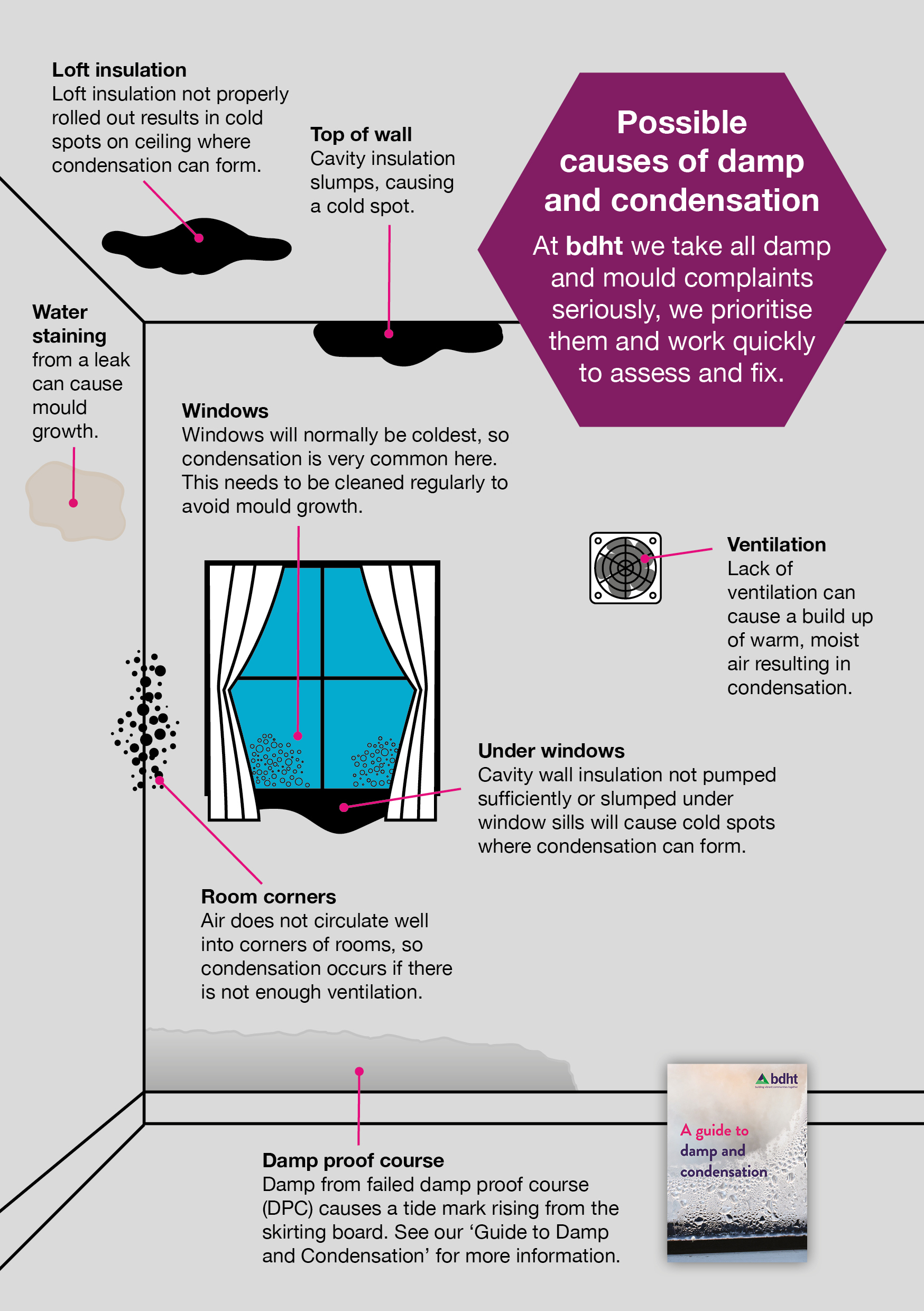Condensation is generated where warm air meets a cold surface and forms water droplets that then encourage mould growth.
Damp is due to water penetration or leak and will require a repair to resolve.
If the area has a ‘tidemark effect’ this is not condensation, it is damp and is caused by a water leak internally or from water getting in from the outside.
There is always some moisture in the air, even if you cannot see it. You notice it when you see your breath on a cold day, or when the mirror mists over when you have a shower or bath.
Condensation is caused when moisture held in warm air meets a cold surface, like a window or wall, and condenses into water droplets.
If this happens regularly, mould may start to grow. This usually appears on cold outside walls and surfaces and in places where the air does not circulate well. The moisture created can also damage clothes, furnishings and decoration. It leaves a musty smell.
Condensation can aggravate health problems like asthma, bronchitis, arthritis and rheumatism
There are three steps to help reduce the condensation in your home:
Step 1: Stop moisture building up Some daily activities produce a lot of moisture very quickly.
Step 2: Ventilate to remove the moisture You can ventilate your home without making draughts. Some ventilation is needed to get rid of moisture being produced all the time, including that from people’s breath.
Step 3: Heat your home In cold weather, the best way to keep warm enough to avoid condensation is to keep low background heating on all day, even when there is no one at home.
What if I can’t afford to have my heating on?
Please contact us and we will be able to check that you are receiving the right benefits and we can also offer support with budgeting.
Will the fans cost too much to run?
We only fit low energy fans that use the same level of electricity as a light bulb.
If I need insulation in the loft, will I be charged for this?
No, we will arrange for this free of charge.
Where can I get further information from about condensation and mould?
Log onto mybdht, or click here for our leaflet.
